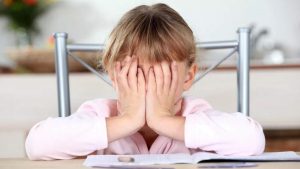 Recommendations for reducing student anxiety
Recommendations for reducing student anxiety
To reduce the level of anxiety, it is necessary for the teacher to carry out a number of activities:
– whenever possible – establish friendly, non-authoritarian relationships with children;
– avoid using negative incentives but use positive incentives to motivate students’ activities;
– create encouraging situations for the child’s self-expression;
– motivate for success;
– if possible, avoid situations when peers compare each other;
– reduce the importance of the testing time (making unnecessary focus on the testing process, “intimidating the day before,” open discussion of the results in class).
Correctional and developmental work to reduce student anxiety: developing social skills to cope with anxiety, developing self-esteem, self-confidence, and interpersonal skills.
Four-step formula:
“Show – give time – find the place – delete”.
 Show anxiety
Show anxiety
Select the right words to help the children express their sadness or anxiety. Ask them if something worries them or they need something. Be patient and gentle with them. Forget phrases like “Think positively”, “What can we do about it?! Such circumstances” or “Control yourself”. Be honest.
Give time to be sad
Do not avoid children’s sadness. Let the child fully experience it without your judgment. An adult’s comments only exacerbate the value of what was lost. It takes the children time to fully express their feelings.
Find the place of alarm
It is important to help the children understand where the anxiety is in their body. For example, when alarmed children can experience tightness in the throat or uneasiness. Then you should relax: breathe deeply to normalize your emotional state or tear the paper into small pieces.
Delete
Help the children get distracted from their worries by doing things they love. It can be sports, painting or any other kind of creativity.

